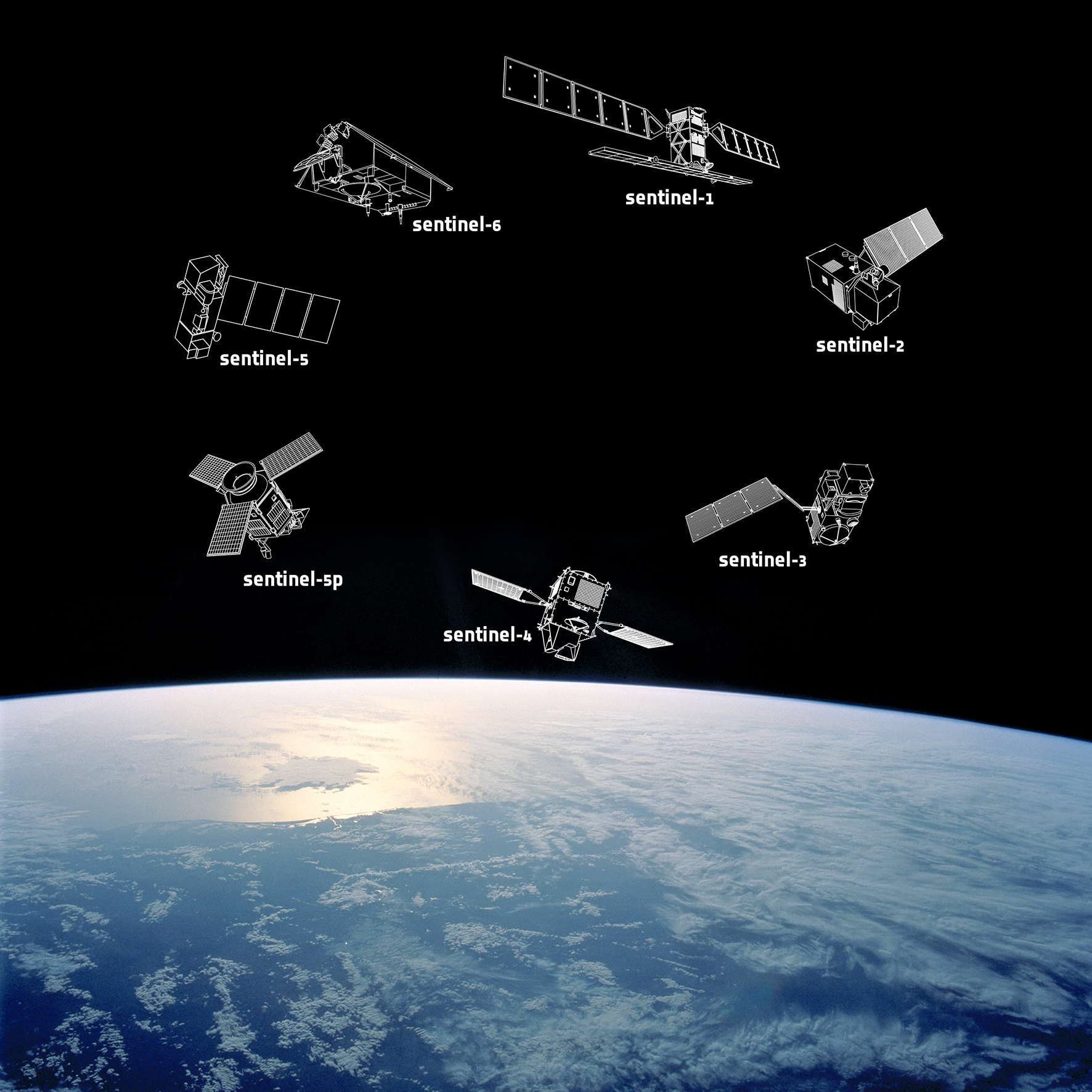Europe’s growing family of Copernicus Sentinel missions is helping to advance the EU’s ambition of reaching carbon neutrality by 2050, according to Simon Jutz, Head of the Copernicus Space Office at ESA.
The environmental data delivered by these missions are powering the development of low-carbon applications across society and helping governments act to reduce the impacts of the climate crisis.
This is accelerating a green transformation for the European economy, continued Jutz, who was delivering an address on the future of the EU’s Copernicus Programme at ESA’s Living Planet Symposium last month.
The current suite of Copernicus Sentinels consists of six missions and one precursor mission designed to use a range of technologies – such as radar and multi-spectral imaging instruments – to monitor different aspects of Earth’s environment, including the land, oceans and atmosphere. Five of these missions are currently in orbit, with the remainder planned for launch in the coming years.
Data delivered by the Copernicus Sentinels are fed into the Copernicus Services, which are already helping Europe to combat challenges such as food insecurity, natural disasters, climate change, to name just a few.
However, the planned expansion of the Copernicus Sentinel family will be key to fulfilling Europe’s long-term sustainability goals, said Jutz.
ESA is currently developing six Copernicus Sentinel Expansion missions on behalf of the EU, which are intended to support European policy and fill gaps in Copernicus user needs.
These include the Copernicus Carbon Dioxide Monitoring mission (CO2M), which will reduce current uncertainties in estimates of emissions of carbon dioxide from the combustion of fossil fuel at national and regional scales, providing decision-makers with a reliable source of information that will help Europe meet its decarbonisation aims.
In addition, data delivered by the Copernicus Sentinels is complemented by numerous missions known as Copernicus Contributing Missions, ensuring that a comprehensive set of Earth observation data is delivered to the user community.
Jutz said: “The Copernicus Sentinels have made key contributions to Europe’s green objectives. Copernicus Sentinel-5P, for instance, uses its TROPOMI instrument to deliver global information on the distribution of planet-warming gases, helping industry and government take action to cut these emissions.
“Innovative space-borne technology developed as part of the Copernicus Expansion Missions – including CO2M – is set to continue these efforts, supporting Europe’s goal of becoming climate neutral by 2050.”
Entitled "The Copernicus Programme – Looking Back, Going Forward", the session took place at the Living Planet Symposium in Bonn on 24 May 2022.
Europe’s growing family of Copernicus Sentinel missions is helping to advance the EU’s ambition of reaching carbon neutrality by 2050, according to Simon Jutz, Head of the Copernicus Space Office at ESA.
The environmental data delivered by these missions are powering the development of low-carbon applications across society and helping governments act to reduce the impacts of the climate crisis.
This is accelerating a green transformation for the European economy, continued Jutz, who was delivering an address on the future of the EU’s Copernicus Programme at ESA’s Living Planet Symposium last month.
The current suite of Copernicus Sentinels consists of six missions and one precursor mission designed to use a range of technologies – such as radar and multi-spectral imaging instruments – to monitor different aspects of Earth’s environment, including the land, oceans and atmosphere. Five of these missions are currently in orbit, with the remainder planned for launch in the coming years.
Data delivered by the Copernicus Sentinels are fed into the Copernicus Services, which are already helping Europe to combat challenges such as food insecurity, natural disasters, climate change, to name just a few.
However, the planned expansion of the Copernicus Sentinel family will be key to fulfilling Europe’s long-term sustainability goals, said Jutz.
ESA is currently developing six Copernicus Sentinel Expansion missions on behalf of the EU, which are intended to support European policy and fill gaps in Copernicus user needs.
These include the Copernicus Carbon Dioxide Monitoring mission (CO2M), which will reduce current uncertainties in estimates of emissions of carbon dioxide from the combustion of fossil fuel at national and regional scales, providing decision-makers with a reliable source of information that will help Europe meet its decarbonisation aims.
In addition, data delivered by the Copernicus Sentinels is complemented by numerous missions known as Copernicus Contributing Missions, ensuring that a comprehensive set of Earth observation data is delivered to the user community.
Jutz said: “The Copernicus Sentinels have made key contributions to Europe’s green objectives. Copernicus Sentinel-5P, for instance, uses its TROPOMI instrument to deliver global information on the distribution of planet-warming gases, helping industry and government take action to cut these emissions.
“Innovative space-borne technology developed as part of the Copernicus Expansion Missions – including CO2M – is set to continue these efforts, supporting Europe’s goal of becoming climate neutral by 2050.”
Entitled "The Copernicus Programme – Looking Back, Going Forward", the session took place at the Living Planet Symposium in Bonn on 24 May 2022.

